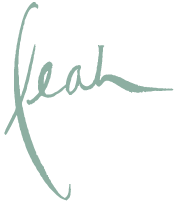About

Leah Leitson, an internationally recognized studio potter and professor at Warren Wilson College in Asheville, North Carolina, received an MFA in ceramics from Louisiana State University, Baton Rouge, LA and a BFA from New York State College of Ceramics, Alfred, New York. Additionally, Leah completed ceramic residencies at the Archie Bray Foundation in Helena, MT and at the Banff Center for the Arts in Alberta, CN. Leah is an active member in many professional organizations including NCECA, Piedmont Craftsmen, Inc., and Southern Highlands Craft Guild. She leads ceramic workshops throughout the US for Penland School of Crafts, Taos Clay, Shakerag, Odyssey Center for the Ceramic Arts, John C Campbell Folk School and Arrowmont School of Arts & Crafts, in addition to teaching ceramics in Italy and Israel. Leah’s work has been exhibited nationally and abroad, and is featured in several museum and private collections. Leah is on the faculty of Warren Wilson College in Asheville, NC, a position she has held since 2004.
Artist Statement
For the past twenty years, I have taken great inspiration from the natural world. From the lush swamps of Baton Rouge to the high peaks of the Blue Ridge Mountains, my porcelain forms and surface treatments are informed by the abundance and beauty of my surroundings. An equal partner in my creative interest is found amidst 18th and 19th Century decorative arts, particularly Rococo silver and Sèvres porcelain, where exaggerated or elongated components speak to my natural inclination toward balance and design. My imagination comes to life at the confluence of this historical foundation and my contemporary observations, resulting in elegant, whimsical, visually appealing, functional ceramics. While my work is always changing, there are certain features my imagination returns to again and again: undulating lobes, fluid lines, smooth ridges, bulbous features, and precise, decorative finishing touches on feet, handles, lips, or spouts. I’m drawn toward the suggestion of excess where glazes might pool or a thrown form might be altered beyond expectation; but I’m likewise wedded to utilitarian forms that flawlessly function and inspire a moment of delight or enjoyment each time the cup is lifted, the pitcher poured, the plate served, the creamer chilled.
About the Clay
I work entirely in porcelain, primarily using high firings in salt or reduction, at times fired to cone 6, electric oxidation. I’m drawn to the whiteness of porcelain that results in a brighter glaze response. The fluidity of the clay also captures movement and gesture in a compelling manner. Finally, porcelain is very as though I’m “in conversation” with the clay while I work.
